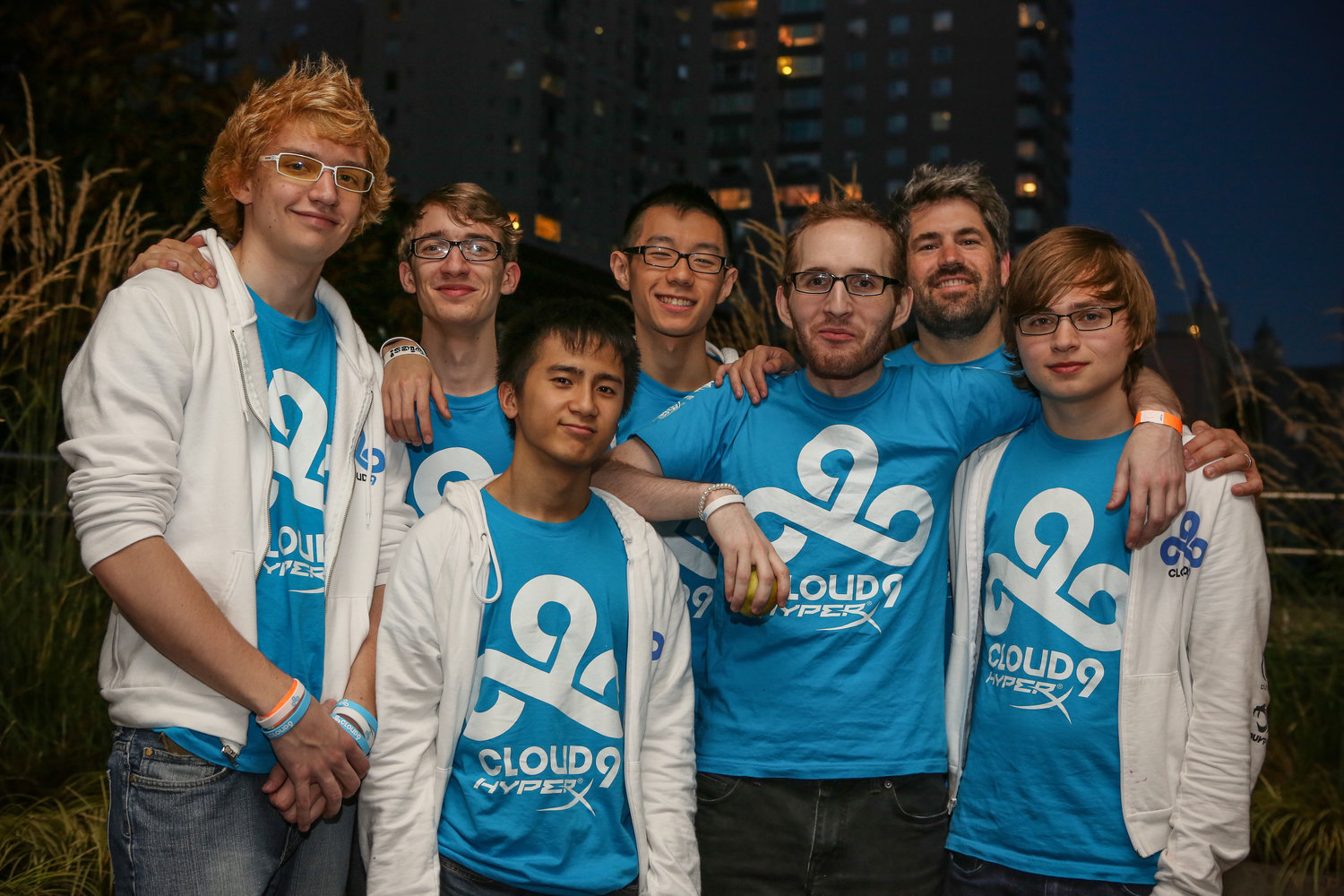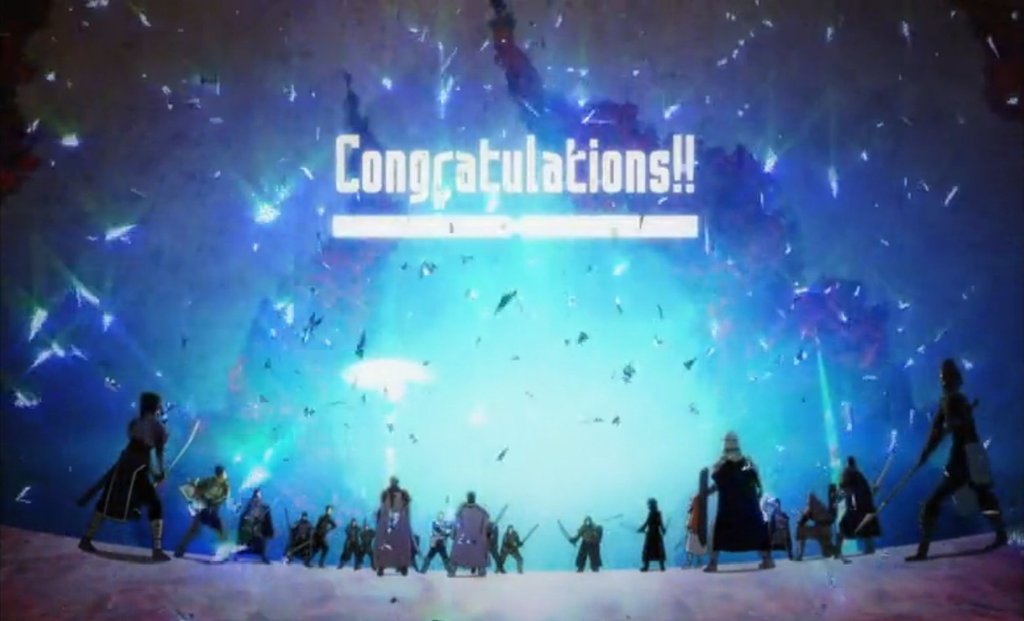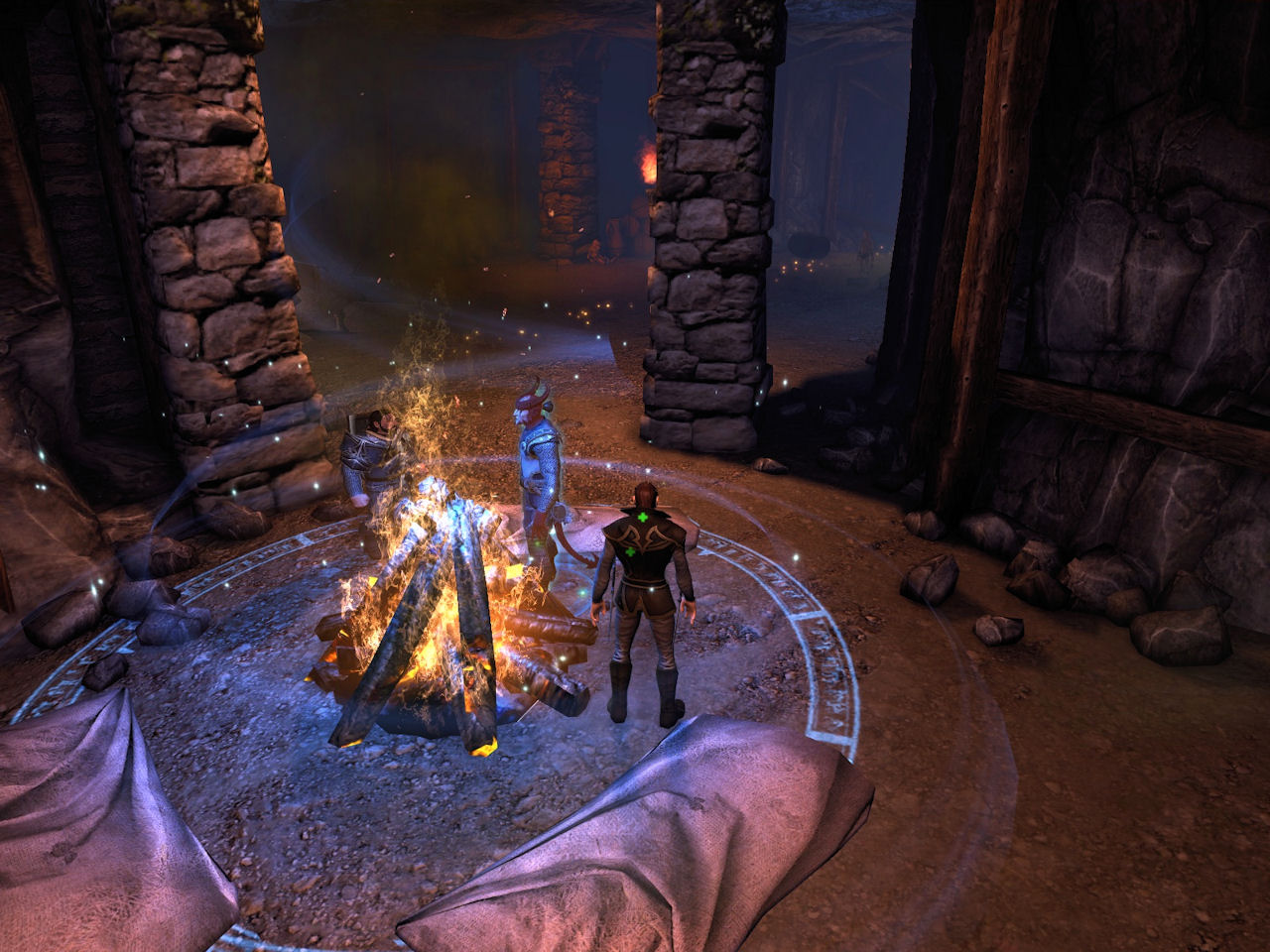I talked a bit before about a different kind of MMO system, with only two roles: Frontline and Flanking. Actual abilities while in these roles would vary based on player choices, but the core concept revolves around the idea of a front-and-center player and up to two flanking players, who aren’t in the direct line of fire.
A structure like this would have a number of ramifications on encounter design and group content. I’ll split things up by working my way up in encounter size.
Solo Encounters
A player playing solo is going to still have a Frontline and a Flanking setup, and is mostly going to be using these to change up their tactics mid-combat. The enemy is going to be attacking them no matter which they’re using, so it’ll be more akin to stances than role-swapping. There’s a lot of possibility here for creative solo builds, though it’ll be instantly familiar to a lot of players because it’ll look like the games where you can weapon-swap easily, like Guild Wars 2, WoW’s stance-swapping, and similar.
Design of solo encounters isn’t going to change much, although the variance in how effective players are at fighting enemies on their own should even out a bit. What’s most likely is that players will build a particular ‘stance’ to be their primary, and then put utility and other functions on the secondary, to fill in gaps and reduce downtime.
Duo and Trio Encounters
Players playing in pairs will start to see the system take shape (yes, that sentence was fun to write). It’s at this point that the Switch mechanic will enter play, and in theory combo chains can start rolling, giving two players large benefits for playing together as soon as they have a duo. Mostly, it won’t require anyone to change their solo builds much, although some players may set up Switch combos and start to fall into preferred roles at this point.
With a third person added into the mix, we’ll start to see group dynamics form. There may be two players who switch frequently, and a third who spends most of their time flanking and supporting, or all three players may switch frequently. It’d be important to playtest various ways of Switching in a trio, whether a player calls a specific other player to Switch or if they simply call for a Switch and the first player to respond is the one who switches. Normally I’d be against that kind of imprecise design, but with a small number of players it can stay organized pretty easily.
‘Standard’ Groups (4-9 players)
At this size group, we’re looking at dungeons, the kind of everyday delves that you get into with a group, do some exploring, fight a few bosses, collect loot. For standard dungeons, I would tune them for 6 or so players, but allow players to enter with as few as 4 or as many as 9 players. Keep the rewards static, but split them among the party, so the fewer players you bring, the more rewarding the dungeon is for each individual.
In this sort of setup, you’re looking at 2-3 trios, and I think the trio would be the basic group unit of the game, because that’s where the Switch mechanic works best. As a result, encounters are going to need to think more about supporting multiple groups and splitting groups up, with fewer single large bosses and more “controlled chaos” fights. I generally think this will be fine, especially because it allows us to introduce tank-swapping mechanics (in which a boss will overwhelm a single tank, so two or more tanks take turns, usually a much more advanced skill) at a very early stage.
Groups will quickly learn to work together in both their trios and in the party as a whole, which makes the overall transition to larger-sized groups a lot smoother and more natural.
‘Large’ Groups (12-24 players)
This size of group fits solidly in the “raid” encounter size, and it’s here where the difficulty comes in, because these fights are going to need to scale to the player number for them to make any sense. One possibility here is to have a “vanguard” group that gets further bonuses based on the players’ choices and can Switch with other whole groups, a sort of second-tier advanced mechanic that sets one team as the ‘heroes’ of the encounter until swapping out for another group.
There’s a certain amount of appeal to this structure, just because it adds an extra layer of strategy to fights based around juggling Vanguard bonuses, but also because it creates a situation in which different groups can play to different strengths. A group with a very strong core group can focus skilled members in one group and have them be the Vanguard, whereas a group where skill is spread out a lot more might perform Vanguard Switches more often, spreading the punishment (and heroism!) around. A particularly skilled and coordinated group might set up a strong combo, in which they perform rotating Switches in their group to chain combos, while also Vanguard Switching to the next group for them to continue the chain, until everyone in the entire raid has participated.
It wouldn’t be unreasonable to have the Vanguard buff scale based on the number of group members, though I wouldn’t make that the only scaling mechanic for encounters.
Encounter Design
One of the things that would go away fairly quickly is the idea of the basic tank-and-spank fight, where one tank holds a boss in place while a healer keeps them alive and the rest of the party burns it down. When even a ‘basic’ group is likely to have two tanks, there’s going to need to be a lot more variety in encounter design.
I’d likely move away from single large bosses as the exclusive “major” encounters in a dungeon, and would quite likely change the way dungeons worked in general. With scaling in place, I’d consider freezing most resource regeneration, so players would need to be much more careful about how they played– being less wanton with their health and more careful about throwing around big spells. With that kind of design, every encounter becomes interesting, because it stops being about blowing everything to win, then recovering, then moving on– efficiency of combat becomes a significant factor. A dungeon might have a number of rest points, acting as checkpoints and letting players restore resources once per run, but keeping even minor encounters relevant.
It would also naturally make it valuable to bring more players into a dungeon, to swap in as resources dwindled. A smaller party might get more rewards, but would be much less likely to be able to complete the dungeon. It would also encourage Switching, particularly if Switching could be used to restore some resources. This would conflict with the idea of having resource regeneration be a core boost to slot, but could be used as a “switching restores more”. If Switch was only usable in combat, with the first party member to gain aggro being the default Frontline player, it would prevent spamming Switch out of combat to restore skills, but potentially open up interesting group dynamics wherein combat is prolonged as a resource faucet.






1 comment